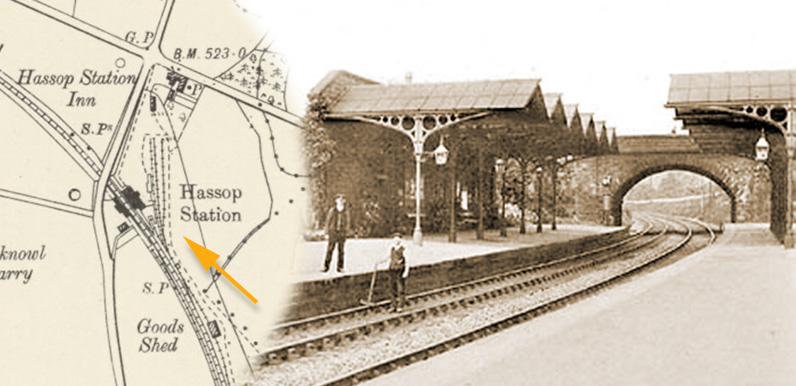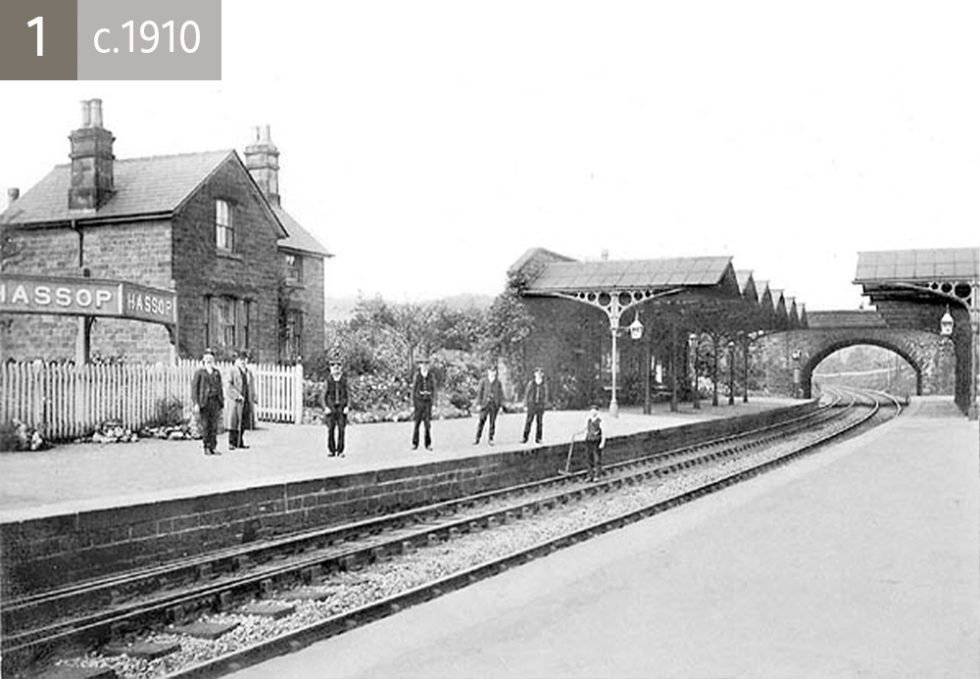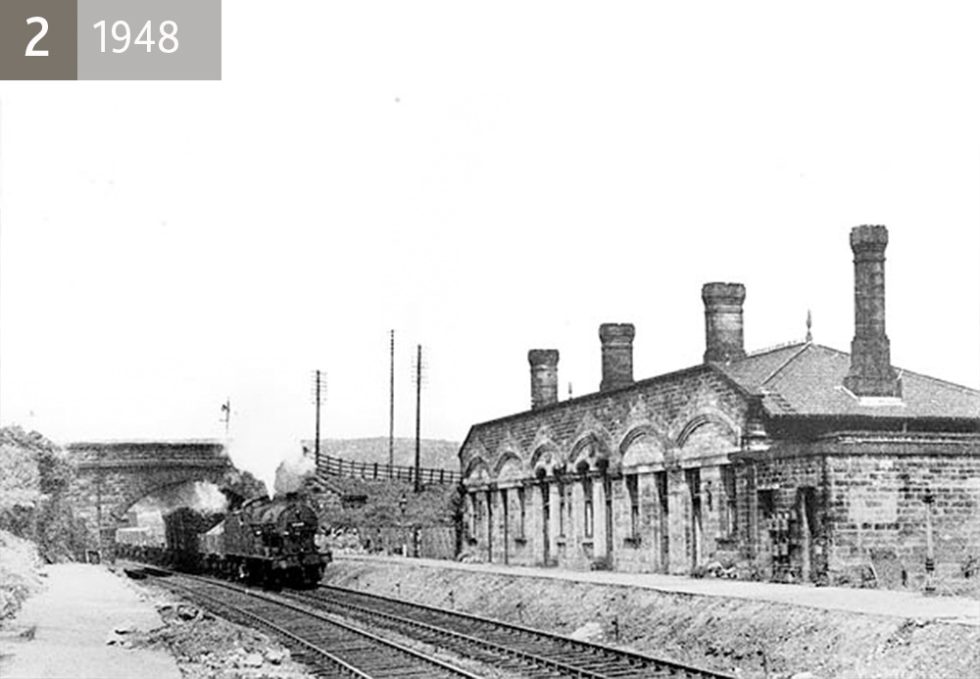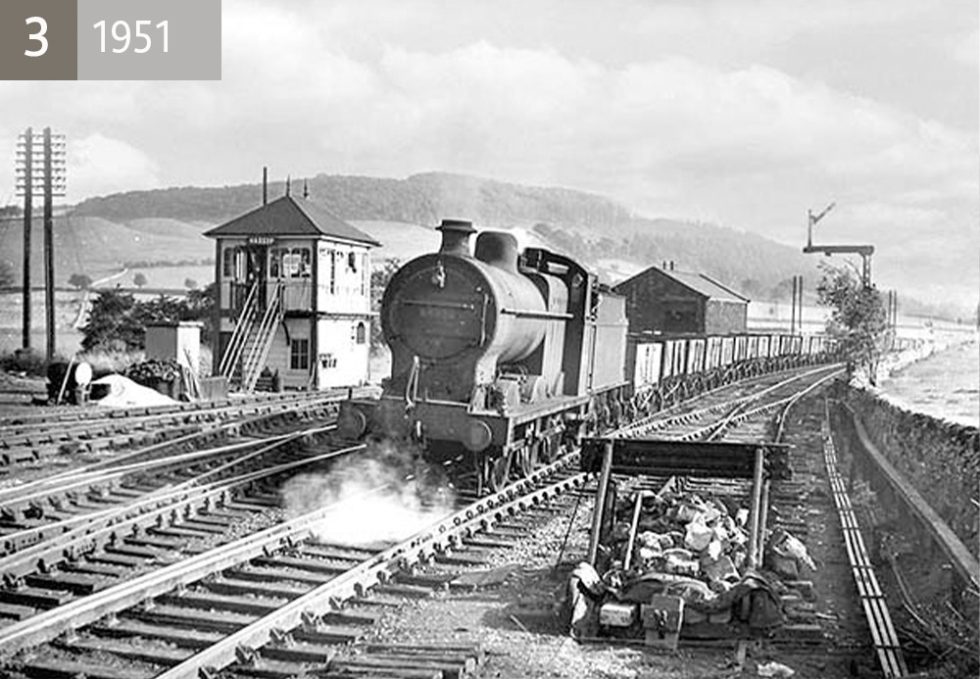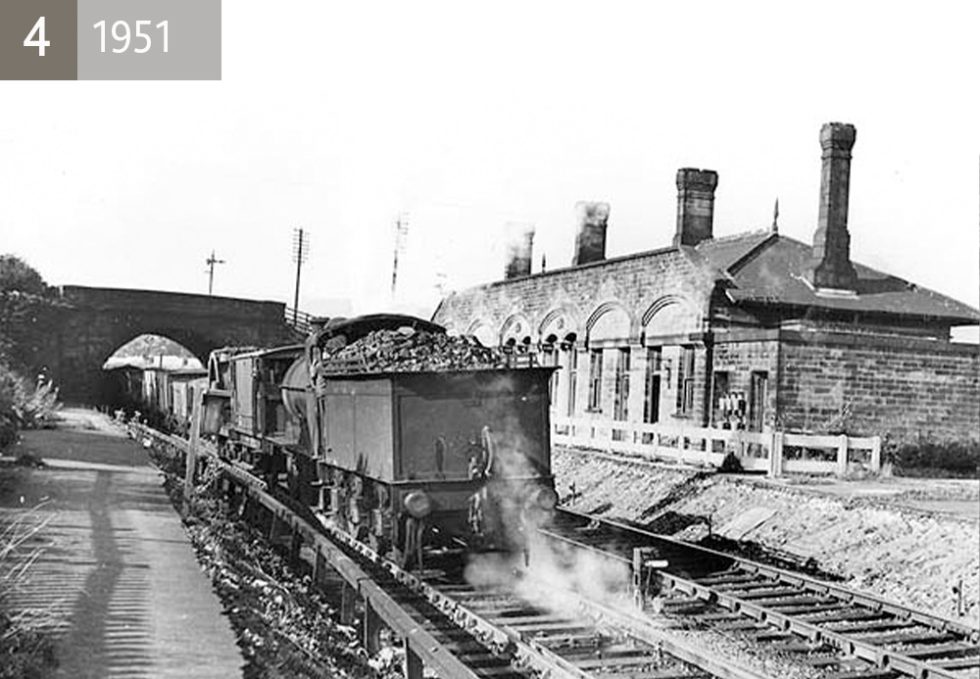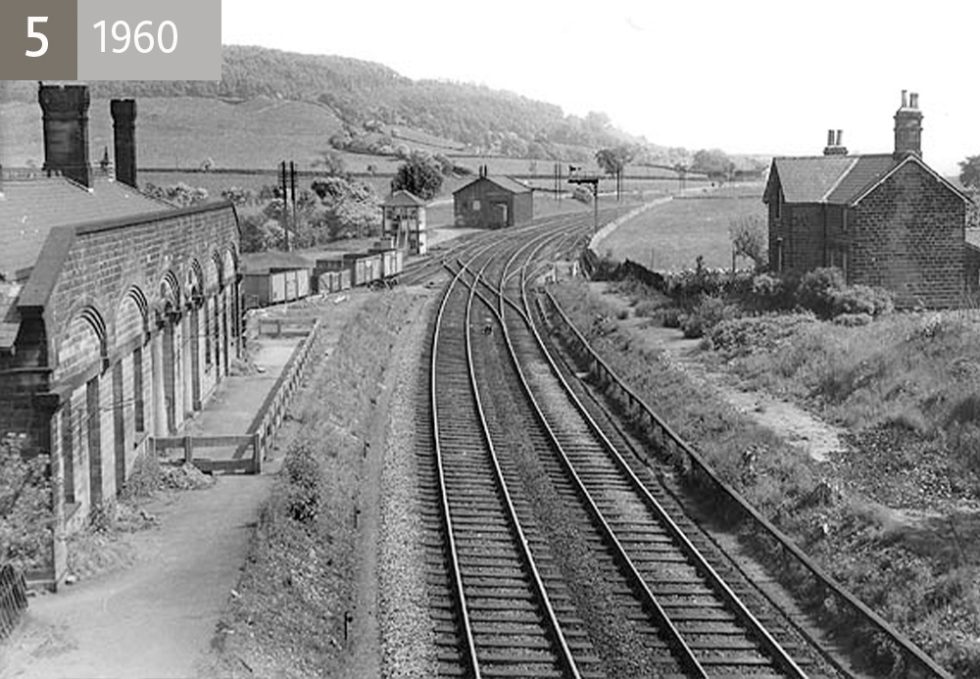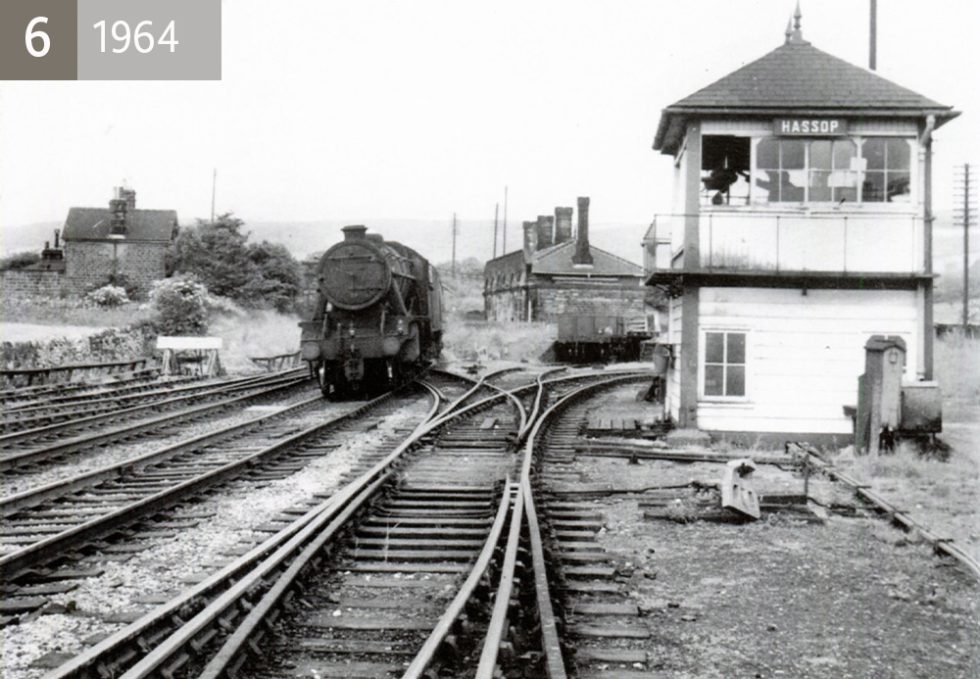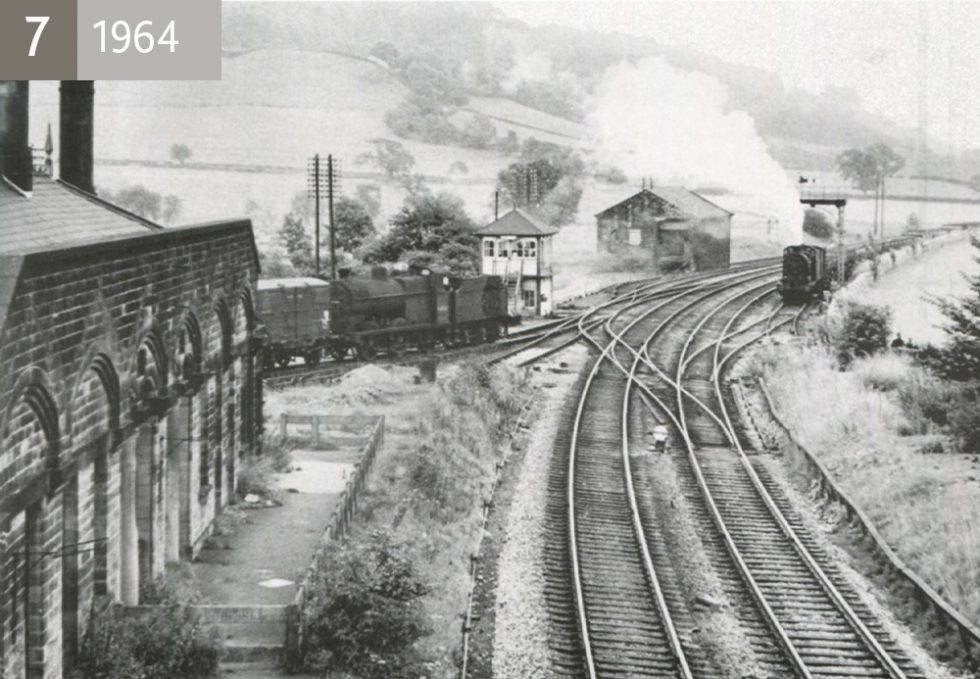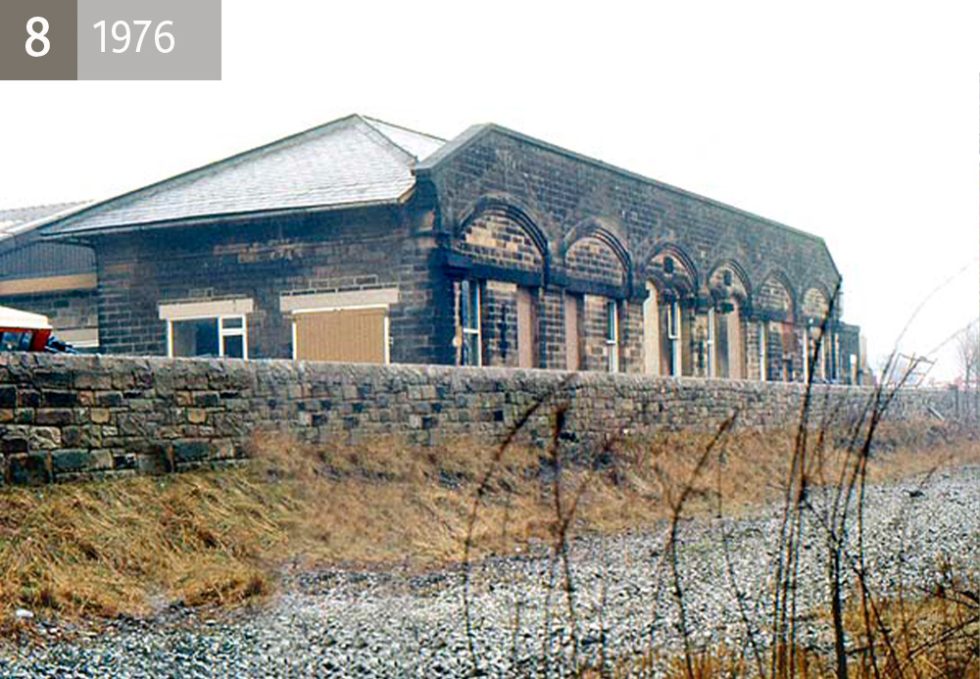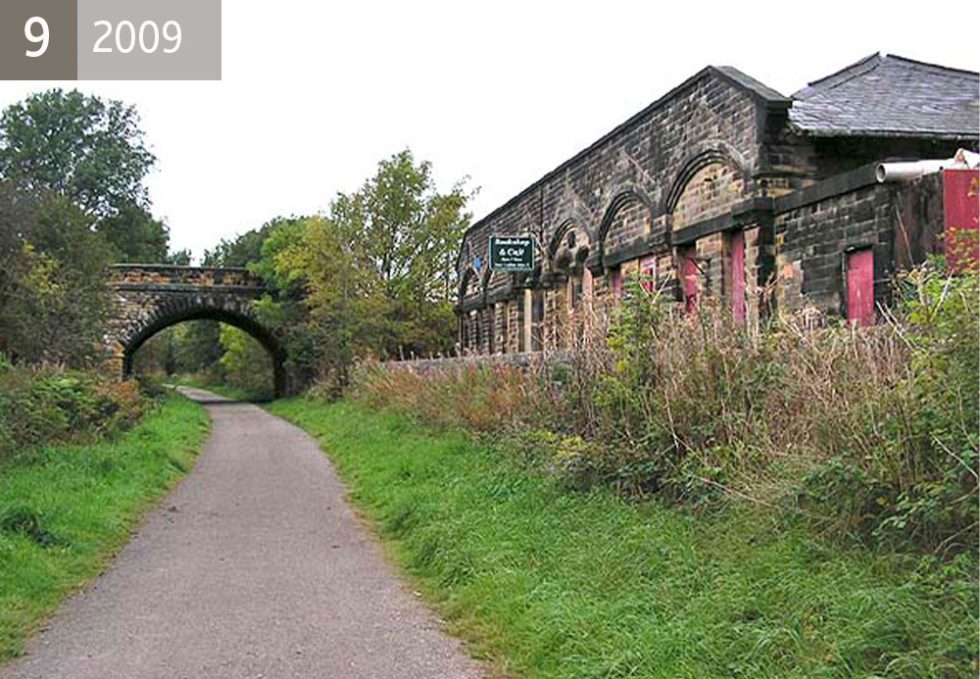Above: Hassop Station in its prime, taken from the southbound platform sometime around 1910.
London Midland’s Ambergate to Buxton line reached what would become Hassop Station in 1862. Situated about a mile south of Hassop village, it became a temporary terminus until the line was completed the following year. (Click here for a short history of the line.)
When the line was extended to Manchester in 1867, Hassop became part of a route that connected the fast expanding industrialised cities of the Northwest with London – the wealthiest and most important city in the world at that time.
The station initially had two platforms with canopies above both (see photo 1 below). The booking office and waiting rooms stood on the southbound platform (today it’s a popular cafe and bike hire shop). The Station Master’s house was beside the northbound platform (today it’s a private home).
Midland Railway included a first class waiting room in the hope that it would encourage the Duke of Devonshire from nearby Chatsworth House to use the station. So they were said to be disappointed when he preferred to keep using Rowsley Station.
Above: Click the ‘Now’ button – or drag the green slider – to see the difference between the station in the 1890s and today’s satellite view.
Hassop was always far more important as a goods depot for local produce than a passenger station. Behind the station was a large goods yard with three sidings, a stone-built goods shed and a large crane capable of lifting 5-ton loads onto train wagons. A small signal box controlled access from the main line to and from the goods yard.
The ‘Then’ view was taken in 1960 (photo 5 below), and although there are wagons on the line leading to the goods yard, both passenger platforms had been removed. Photo 2 shows that they had been taken down before 1948.
When it first opened, Hassop served more passengers than Great Longstone. But by the early 1890s it had started to decline, with less horse-drawn vehicles meeting the trains. The Chatsworth Omnibus started stopped calling at Hassop altogether, only meeting trains at Rowsley.
End of the line
The station was closed for passengers in 1942, and the platforms would probably have been removed soon after. It remained open for goods traffic until 1957. The 1963 Beeching Report recommended the closure of all stations between Matlock and Buxton. And Hassop Station closed the following year, with the track lifted in 1969, and the Station Master’s House sold soon after.
It seems to have been used by Chatsworth House for some years. In 1982 the Peak District created the Monsal Trail and the waiting rooms became a bookshop and cafe along the route. This closed for refurbishment in early 2010, and reopened under new management six months later with the addition of a popular cycle hire shop.
Photo gallery
Click on any photo to enlarge and use the arrow keys to scroll through. (Photos 1, 4, 6 & 7 courtesy of Middleton Press: Ambergate to Buxton. Other photos courtesy of Disused Stations.)
Other Monsal Trail stations : Bakewell : Great Longstone : Monsal Dale : Miller’s Dale : Blackwell Mill Halt

